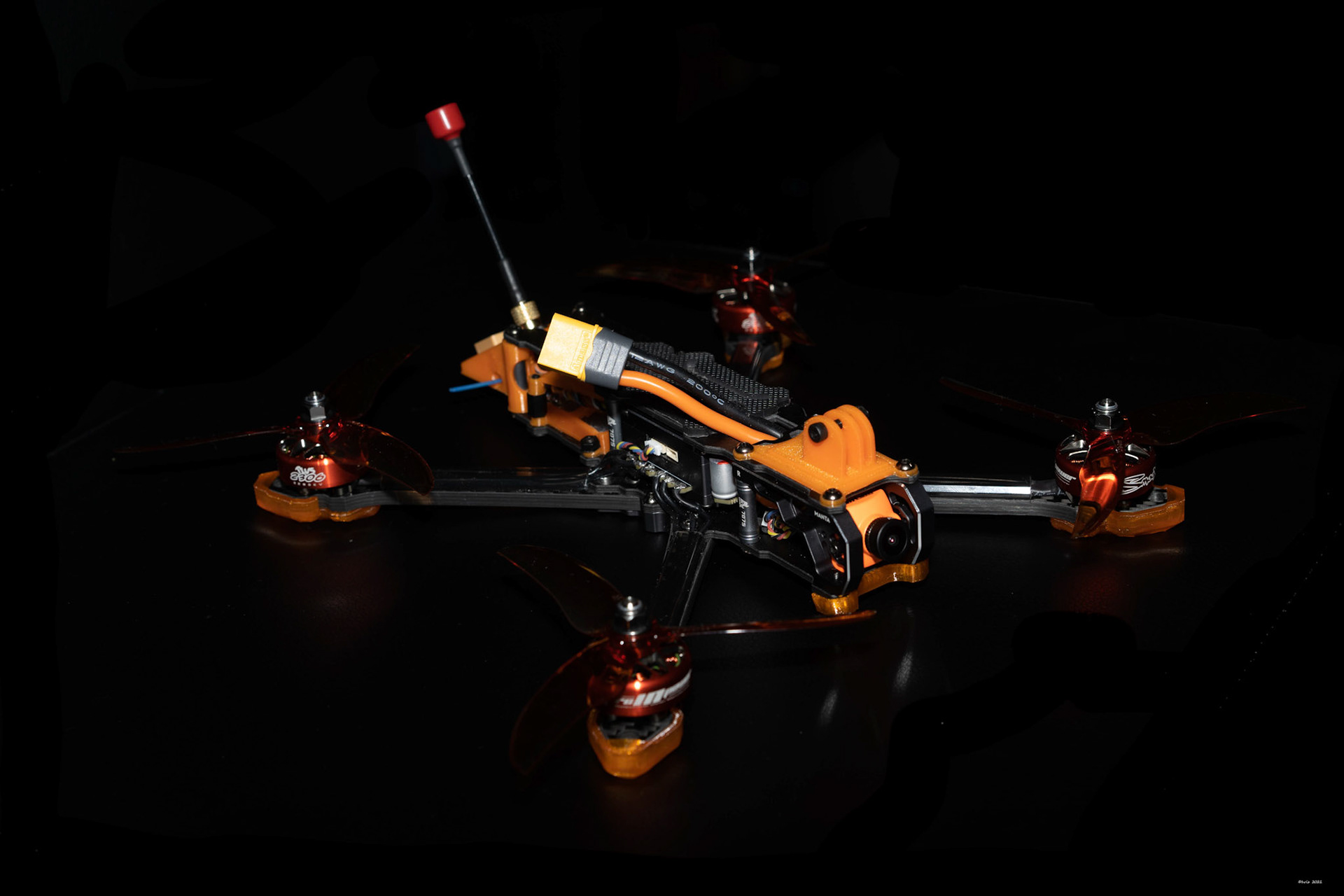





This thing is my first 5" edit. The goal was to get a good quality analog 4S and not too much headache to start freestyling, my first build being a 3" whoop (cinesplore). You'll tell me, in this case, why didn't he buy the BNF version at 339,90€ and you'll be right. Well, it's just because I take as much pleasure to build the machine as to fly it. I wanted a gps too, to know how it works, basically, in anticipation of future lighter builds to go into the mountains when I'm really roughing it in piloting (when I break this one, basically). Some remarks: The weight of the machine is consequent, 420g AUW that will make 600g with the lippo and the Caddx Peanut (I don't want to break a nice and expensive Gopro right away) So, because of the GPS, the ELRS, the TBS Unify and the Peanut, I designed and printed in TPU some parts to assemble all this properly. You can find them on Thingiverse. I like the principle of the arm "key" under the machine, it looks strong and it leaves space between the bottom and the top plate to put the electronics. The F7 + ESC 50A stack is nice in its protective case, but it is largely responsible for the extra weight. I didn't find it any easier to mount than any other stack: it's not the three soldering joints that it avoids that will change anything, and, in my case, I had to redo the connections for the RX, and for the VTX and... for the GPS (the order of the wires is not the same between the connector on the FC side and the peripherals). Nevertheless, if I want to go digital I would just have to unplug the VTX and put a dji transmitter on the other socket provided for that purpose. And to design another backpack adapted... In short, all these connectors, it's not really simpler or cleaner than nice soldering with the wires cut to the right length. That's it. This thing is rock solid: I've crashed it so manytime now... WEIGHT : 420 grams





